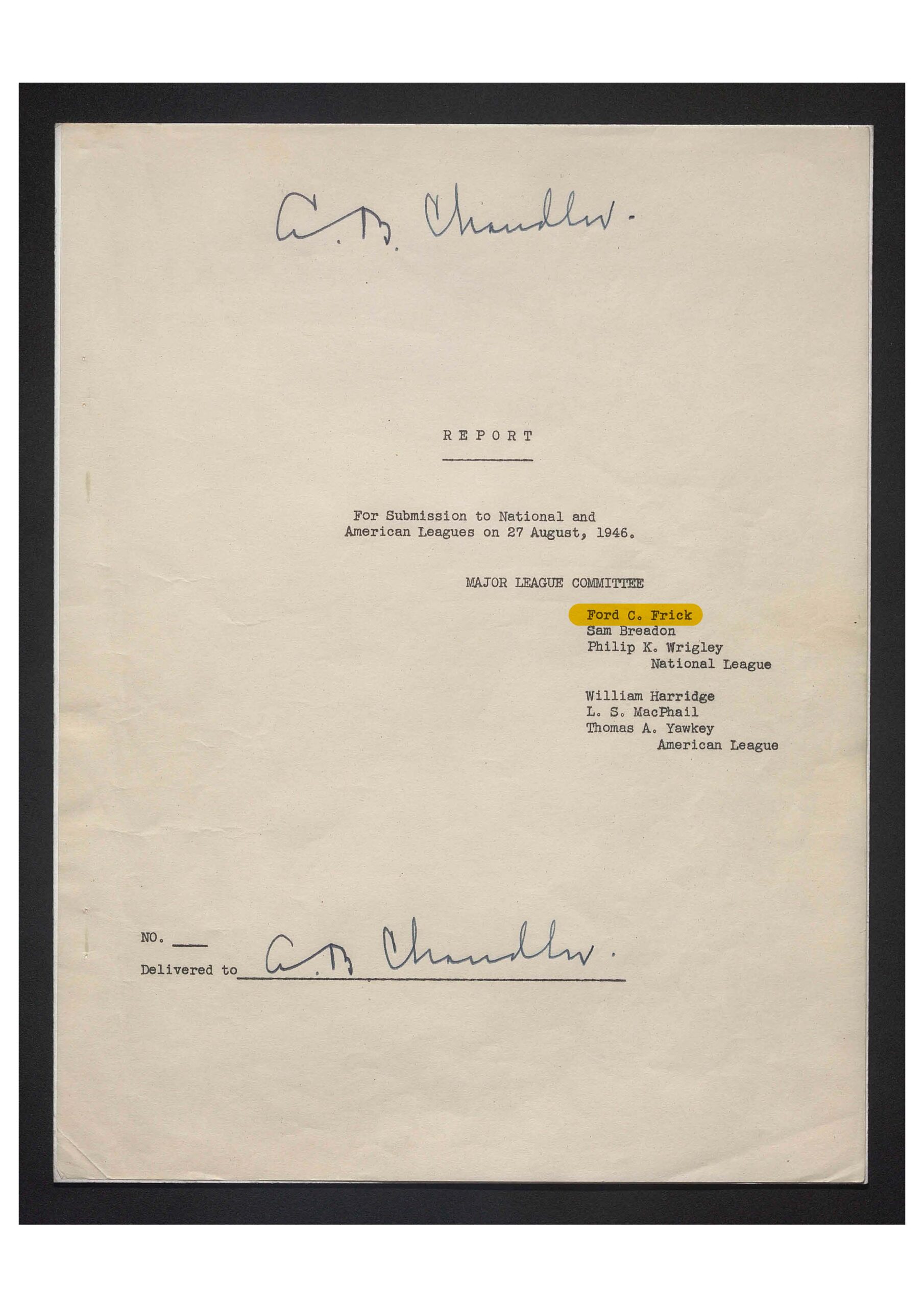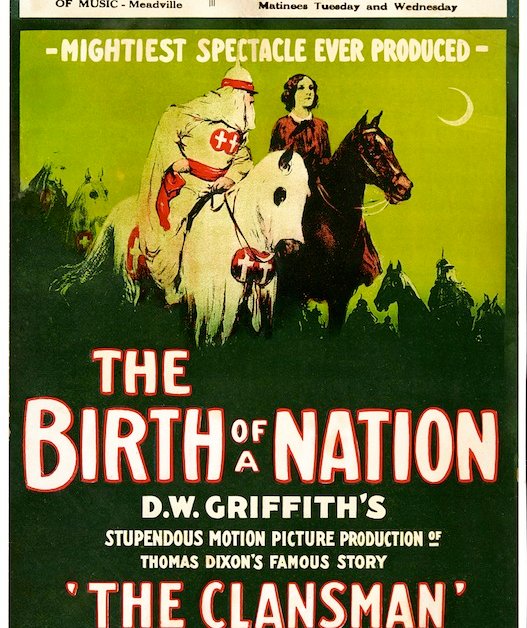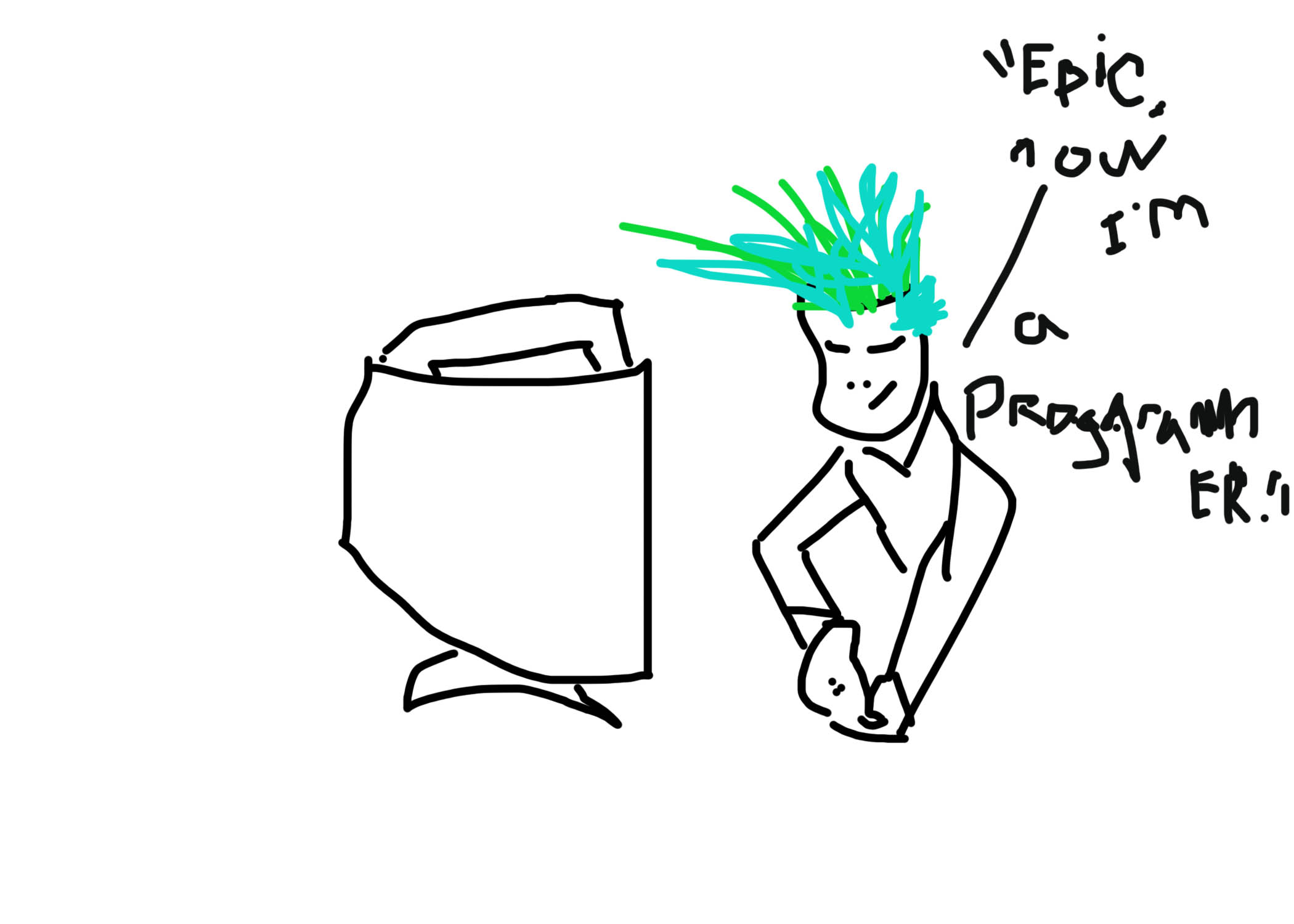All posts by BOOM
Chapter one: to be exposed.
It’s interesting how the word expose, or the idea to expose, has evolved over the millennia. As with all verbs in our common usage, it has its roots in a practice. The word practice itself has a history of meaning that is from the earliest of recorded history. All that being said, it’s these two words that when combined, weave a complicated tale of victims and survivors, forgotten and the re-imagined; all, a complex product of one phrase: to be exposed.
In the ancient Mediterranean and Near East: Anatolia and the Levant, even as far as the northern coastline of Africa, all the way to Gibraltar, the practice of being exposed mostly referred to the poorest of the poor, the proletarii. The word proletarii derives from the Latin word for children, “prole”. The proletarii were the lowest class of the Roman caste. Landless, it was said that the proletarii could only contribute their children for the benefit of the Republic. And they did, and in this way, exposed their children to a life of slavery and hardship. But that’s not what the term, to expose your children, meant.
To expose one’s child was a form of ancient birth control. One of the earliest examples is, actually, from ancient Greece, Oedipus is exposed (left out in the wilderness to die) to ensure the prophecies about him go unfulfilled. Well, turns out the Romans were listening. So, a common practice for the poorest of the poor, the proletarii, was to expose their children. From the modern perspective, it seems not only animalistic but also, inexplicable, how a parent could ever expose their child in such a way. And yet, that is how far we have come as a society based, in many significant ways, on the Greco-Roman cultural project.
We can’t imagine exposing our children like that, and yet, we understand the phrase, still, as a negative, even in the modern context. In fact, isn’t it true that instead of referring only to some momentary event, the modern definition now includes a much broader timeframe? In other words, exposing your children could be something that happens for a day, a year, maybe their entire childhood. That’s an example of one of those moments I was talking about before, the deadliest kind, the kind that kills both the perpetrator and victim. It’s times like that when everyone needs a heaven to make sense of it all, but I wouldn’t rely on it.
So, one would be right to ask, ‘are we really evolving to a better us, or are we still yoked together by the neck, watching shadows on a rock wall?’ I pulled my chips on that question a long time ago, but not after losing my ass playing against the house. I think it all comes down to tellin ourselves what we want to hear so that the hit we take is always from a position of suffering, never something we might have deserved. Again, it might make sense, but I wouldn’t rely on it.
When you compare the impact of the law of exposure of the modern age to that of its antecedent, a sane person would have to wonder whether it might be more merciful if practiced like in the days of the heathens. Just put them out of their misery early and be done with it. But, still, I think that’s a step back. All these mountainous decisions are the projected image of the smaller decisions made by all of us. That’s why you should fear them. It might just be about ice cream, or a seat on the bus, hell, maybe it’s about your momma or your sister, trust me, they can fight their own battles without you losing course. The best thing to do when you’re being exposed is to just watch and listen, and when possible, escape.
I was a boy when I was exposed to a sexual predator, and yet the experience didn’t result in any sudden enlightenment of the OT. If anything, it made me more subservient to its various guises: health, wealth, youth. Instead of an acceptance of the truth, I embraced its antithesis: I didn’t want to die. A divergence to my path was introduced that could not be reversed, and only intensified as I got older.
I remember walking home from school one day, I wasn’t supposed to because I was far too young, but I was precocious and thought I would show them all. After walking several blocks, in the right direction, I suddenly became lost. I no longer recognized the landscape. It was then that a fear began to grow within me, ‘what if I’m wrong about all of my previous steps?’ I was terrified and started to cry. Suddenly one of my older sister’s yelled at me, “what the hell are you doing out here?” I wanted to hug her as my savior. But that’s the fear of exposure I’m talking about. The cadence of fear. The realization that there is no one coming to save you.
The experience left me untethered but more importantly, it revealed an essential difference between the ancient practice of exposure and its modern cognate. In the modern usage, it may not be possible to reverse course, but it is possible to recover control of the direction you are traveling, and that can make all the difference in the world. But everything that graces your doorway comes with a shadow (not a truth per se, but certainly a statement I can make with complete confidence).
Recover and recovery are two different modes of a practice, the former usually leads to the latter. But in the practice of the law of exposure, there is never a so-called “recovery”. The loss is the beginning of change, the change in course that will define the trajectory of your journey, until the next one. And there is always a “next one” for those that have been exposed, just ask Oedipus.
When I compare our souls with those of our ancient past, I see the anguish of the proletarii with greater clarity than parents of those who are exposed at the beginning of the new millennia. The primary difference being the immediacy of the loss. No woman exposes her child without memory and loss. But because the modern practice of exposure can last for so long, it’s difficult to outline or to recognize. It’s in the shadows of the good times, a language in music that only plays at the end of a long and terrible day. It takes a connoisseur of suffering to recognize its mournful plaint, but that’s the legacy of the exposed. We become the worlds empathics. We come to recognize that the OT has a language of its own, and that language requires no translation. Not everyone understands the truth, but everyone understands the language of death through the concept of loss. Ultimately, that is what the conversation of exposure is about, loss, permanent loss, and a wrestling with the Only Truth.
All those who experience exposure, experience a corollary loss. I feel fortunate to have discovered my loss at the age I am. Perhaps that’s the biggest distinction between us and the ancients, unlike our infant predecessors, once we discover the loss, we can begin to understand its history and its trajectory. Suddenly, we come to realize, we’re no longer lost, we’re exactly where we should be, nowhere.
And ‘nowhere’ ain’t a bad place to be.
Being nowhere (and everywhere) with all my friends.
What will she think?
(DDSNFF)
I woke up with my cheek glued against the concrete
By the spit and hatred of my shame
Concrete on concrete is what I thought as I pulled my lip free
And broke out into song
“Mommas don’t let your babies grow up to be cowboys…”
It was the first and only song I could think of that made any sense
Of the madness and chaos that had descended upon my soul.
Not the sleepin in my own vomit
Not the smell of piss that broke the air like a terrible perfume of
Man’s inadequacy
Waylon Jennings and his warning to all mothers that some men
Some broken men
Could never be relied upon except when they were leaving you behind…
It wasn’t long after that that the whole cosmic weight of my failure fell upon my mind and body and I became like a modern Atlas waiting and hoping for the god of thunder
To put me out of my misery.
“For Christ’s sake stop singing that damn song!” I told my head
Blistered and uneven
Shocked and forced into a state of unwanted sobriety.
All the while an old man whistled a broken elegy to his lost Samantha…
Samantha…I thought…sounds like my Sophia…
Sophia…
it was then the tragedy of all I had done and tried to forget played like a video on a loop
Over and over in my mind
Sophia…
the brilliant little star that had always shined so brightly through the infinite shadows that I had thought were my only friends…
Sophia…
the smile of Helen…poised and assured…that made me believe I could create something more than disappointment…
something full of love…and everlasting
Sophia…
What will she think of me?
The words limped across the darkness of my shattered mind only to find their way into the deep pool of my regret.
What will she think of me?
Sophia…
My little ‘fish’?
Nowhere but here – Prologue
It may take you a week, a month, a year. It may happen in your youth or in your prime, even in the later years. The only way to describe ‘it’ is a sudden realization of something you’ve known all your life. A truth, perhaps the only truth one can ever hang their hat on: no one gets out alive.
Looking back on the days and years, the minutes and careful seconds that compose my life’s trajectory, I am astounded that I am still ‘alive’. Life, as I see it now, is simply an aggregate of moments, split-seconds when you make that final decision to run or stay. And yet, who’s to say the choice was ever yours in the first place? Who am I to tell you anything about your life, or mine, and expect it to make any sense or be decodable?
It’s the great irony of life, how similar we look and yet, how different we can be. I have always believed that gap between us could be filled by the dream long lost in the technological ether, that thing called ‘love’. I sit here now, half dead in time, wondering if I even know what the word means. That’s how fragile things become, like ideas, beliefs, even the foundations of your life start to show their age in ways, with a smile or a tear, you did not expect.
Again, there is only one truth. And as dark as it looks, one only need shed a light on it to see it more clearly and discover that what you thought was the cave of a monster, was a place that you could find shelter from the storm, a little home of your own. The ancient Taoists understood. They shined a big fat light on the subject of death and realized, it’s nothing to be afraid of because it’s the truth of everything. That doesn’t mean the living don’t get to mourn. Everyone grieves, even Chuang-tzu wept at the loss of his wife.
Nope, it’s not the end of the journey one should fear, it’s those moments of mental lightning, where the gods demand you testify for your life, the ones that introduce a deviation from the course that can never be reversed. Again, who’s to say I’m right? Maybe it’s just me, my life that’s had its moments when all you’re eating is a bowl of shit. That’s theoretically possible and I am just trying to say, I know now, it doesn’t really matter.
The rest of this is a selective memory of the journey that got me nowhere but here, so to speak. ‘Selective’ in the sense that all memory is selective. It will come much as it arrived, in unexpected ways and over a long period of time. But, as sure as a man jaded by life, yet still optimistic, can put time enough a way to remember, think and write, I promise to do as such, realizing such a promise might as well be made to the wooden cross on my wall for all the good it will do.
The Ford C. Frick Award: A disgraceful and unnecessary reminder of major league baseball’s racist past.

Since 1978, Major League Baseball (MLB) has sought to recognize the careers of sports broadcasters and journalists who it claims have made “major contributions to baseball”[1] by honoring them with what is known as the Ford C. Frick Award. Named after the former MLB Commissioner, National League President, and Hall of Fame inductee. The award’s recipients include many of baseball’s most influential and well-known broadcasters, such as Mel Allen (1978), Red Barber (1978), Vin Scully (1982), Jack Buck (1987), Dick Enberg (2015), Bob Costas (2018), and just recently, Al Michaels (2021).[2] Understandably, it is considered one of the MLB’s most prestigious awards conferred upon any non-player. And yet, for many, it represents an unfortunate, and unsightly reminder of Baseball’s racist history.
How so?
Simply put, in honoring the memory of Mr. Frick in this way, the MLB is, in effect, celebrating a well-known segregationist and white supremacist. And while many in the baseball community may object to this characterization, they cannot argue with the historical record detailing Mr. Frick’s important role in upholding the League’s policies regarding segregation during the middle of the twentieth century. Perhaps the most infamous example is his involvement in the creation of the so-called “MacPhail Report” of 1946.[3]

According to the late, baseball historian Jules Tygiel, “On July 8, 1946…the National and American Leagues established a joint steering committee ‘to consider and test all matters of Major League interest and report its conclusions and recommendations.’”[4] Amongst the numerous issues under consideration was the widespread practice of racial segregation, what the committee later referred to as the “Race Question.”[5] The year prior to the committee’s creation, Branch Rickey had famously broken MLB’s so-called “gentleman’s agreement”[6] by signing the now legendary, Jackie Robinson to play for the Brooklyn Dodgers.
According to Branch Rickey biographer, Murray Polner, the formation of the committee was, in many ways, a response to Rickey’s actions and an effort by the other owners and Baseball’s leadership “to keep [Major League Baseball] lily-white.”[7] Thus, the league appointed owners Larry MacPhail (Yankees), Thomas Yawkey (Red Sox), Sam Breadon (Cardinals), and Philip Wrigley (Cubs), along with both the President of the National League, Ford Frick, and American League, William Harridge, as members of the committee, with MacPhail“ elected [as] chairman.”[8]

Over the next six weeks, the committee met on several occasions and then presented their findings in the form of a 25-page report at an owner’s meeting held in Chicago on August 27, 1946. In the Forward of that report, the committee acknowledged that “Baseball…[was] under attack…” and that “Its right to survive as it ha[d] always existed [was] being challenged by rapidly changing conditions and new economic and political forces.”[9] Amongst these various challenges was the threat of integration, for which the committee sought to provide, “Methods to protect Baseball from charges that it [was] fostering unfair discrimination against the negro by reason of his race and color.”[10]
In subsection “E”, under the heading “Race Question”, the committee outlined the primary reasons, they believed, justified the continuation of the Major League’s informal policy of segregation. The first involved the fans. According to the report:
A situation might be presented, if Negroes participate in Major League games in which the preponderance of Negro attendance in parks such as the Yankee Stadium, the Polo Grounds and Comiskey Park could…threaten the value of the Major League franchises [with regards to white fans].
In other words, since the majority of those who attended the games were white, the committee feared that integrating the teams would lead to more Black fans attending. The result of which might prevent white fans from attending games all together. This, they argued, would no doubt have a deleterious effect on a team’s ticket sales and revenues.
The second reason given by the committee emphasized the “qualifications [or, lack thereof] of Negro players.” It stated:
The young Negro player never has had a good chance in baseball. Comparatively few good young Negro players are being developed. This is the reason there are not more players who meet major league standards in Negro leagues.[11]
Negro players, the report contended, lacked “the technique, the coordination, the competitive aptitude, and the discipline” necessary to play in the Major Leagues. One of the reasons cited was the Negro player’s lack of “minor league experience”. Of course, the committee failed to mention that the reason the Negro player had no experience in minor league baseball was because it, like the MLB, was also segregated.
Thus, the primary reasons proffered by the committee for why Black players couldn’t and shouldn’t play in the Major Leagues were, in the first instance, clearly racist, and in the second, promoted an overtly white-supremacist ideology. Despite these facts, at the end of the meeting, all the attendees were asked to sign the report as evidence of their agreement with its contents. Everyone (except for Branch Rickey), signed, including Ford Frick.[12]
Since then, many have attempted to defend Mr. Frick’s complicity by pointing to his actions after that infamous meeting in Chicago. For instance, some refer to a situation that occurred less than a year later when it was rumored that players on the St. Louis Cardinals were contemplating a strike if they were forced to play against Jackie Robinson. As National League President, Mr. Frick is reported to have instructed Cardinals’ owner Sam Breadon (another co-signor of the MacPhail report) to “Tell [the mutinous players] that if they go on strike, for racial reasons, or refuse to play in a scheduled game, they will be barred from baseball even though it means the disruption of a club or a whole league.” Murray Polner called it “Frick’s finest moment.”[13] And yet, while Mr. Frick’s words may seem to disprove any racist inclinations, one must ask, what choice did he have?
With Robinson now a fully-fledged MLB player it’s not as if Mr. Frick could have ignored the threat that a player walkout would have meant to the National League as a whole. The horse was already out of the barn. Moreover, it’s not as if his threat could be interpreted as some anti-racist polemic. Essentially, he was reminding the players that they were contractually obligated to play “scheduled games” regardless of who was playing on the other team. A more telling example of Mr. Frick’s views on race occurred years earlier, in 1943. According to Murray Polner, Bill Veeck Jr. sought to purchase the pitiful Philadelphia Phillies with the intent of “stock[ing] it with Negro players.”[14] When Frick learned of the plan, he, along with Commissioner Kenesaw Landis, blocked the sale to Veeck so as to prevent him from “contaminating the league [with Negro players].”[15]

The point is, regardless of Frick’s stand after the admittance of Jackie Robinson, his involvement in the formulation of the so-called MacPhail Report cannot, and should not, be ignored or excused. He helped to write it and then signed it, and in so doing, became an accomplice to one of the most disgraceful attempts to prolong a form of systemic racism that to this day is rightly viewed with disdain and disgust.
How then can the MLB defend itself for allowing something like the Ford C. Frick Award to continue to exist? It has been 75 years since that infamous day in Chicago, and yet, in honoring Frick with his own award, the MLB willfully ignores the man’s history as a racist. Perhaps even more shameful than the award itself is the fact that not a single Black journalist has ever received it. Thus, the Ford C. Frick Award has become nothing less than a pantheon of celebrated white men. Even if all the recipients are men worthy of recognition, the optics are very troubling.

Which begs the question, how do historians of the game, people who know Frick’s history, like Bob Costas allow themselves to be associated with it? It’s a shame and an embarrassment to baseball and an affront to all minority journalists who cover the game. Simply put, the Ford C. Frick Award is an unsightly and unfortunate reminder of Major League Baseball’s racist history, one that needs to be done away with.

_________________________________________________
Footnotes
[1] Major League Baseball, “Ford C. Frick Award”, https://baseballhall.org/discover-more/awards/887
[2] Major League Baseball, “1978-1979”, https://baseballhall.org/discover-more/awards/887#1978—79
[3] MacPhail Report. August 27, 2021 marks the 75th anniversary of the MacPhail Report.
[4] Jules Tygiel, Baseball’s Great Experiment: Jackie Robinson and His Legacy (New York: Oxford University Press, 2008), 82.
[5] Tygiel, Baseball’s Great Experiment, 83.
[6] Doug Pappas, “The MacPhail Report”, Outside the Lines (SABR, Summer 1996), (http://roadsidephotos.sabr.org/baseball/MACPHAILREPT.htm
[7] Murray Polner, Branch Rickey: A Biography (New York: Signet, 1983), 187.
[8] Tygiel, 82-83.
[9] MacPhail Rpt. Pg.2
[10] MacPhail, 3.
[11] MacPhail, 19.
[12] Polner, Branch Rickey, 187.
[13] Polner, 198.
[14] Polner, 152.
[15] Tygiel, 41.
Ricky Bobby and Hollywood’s ugly history of othering.
 As a film historian I am intensely aware of the inherent flaws of the cinematic narrative. The fact that it deals mostly in hyperbolic stereotype has been the Achilles heel of all popular film since the earliest iterations of the modern film paradigm. The classic example is of course D.W. Griffith’s The Birth of a Nation. From a 21st century perspective, the use of so many disturbing and exaggerated racial stereotypes is offensive to the postmodern sensibility. And yet not much has changed when it comes to Hollywood’s reliance on and perpetuation of ugly and inaccurate stereotypes. A prime example is the film Talladega Nights: The Ballad of Ricky Bobby.
As a film historian I am intensely aware of the inherent flaws of the cinematic narrative. The fact that it deals mostly in hyperbolic stereotype has been the Achilles heel of all popular film since the earliest iterations of the modern film paradigm. The classic example is of course D.W. Griffith’s The Birth of a Nation. From a 21st century perspective, the use of so many disturbing and exaggerated racial stereotypes is offensive to the postmodern sensibility. And yet not much has changed when it comes to Hollywood’s reliance on and perpetuation of ugly and inaccurate stereotypes. A prime example is the film Talladega Nights: The Ballad of Ricky Bobby.
I remember the first time I watched the tale of Ricky Bobby, like many around the world, I found the comedy to be both outrageously funny and socio-culturally accurate. It was one of my all-time favorite comedies and I owned the regular and widescreen DVD versions, which I watched on a regular basis. Though I have family that lives in the Southeastern United States and are fervent NASCAR fans, I accepted Adam McKay and Will Ferrell’s vision of Southern culture without question. In other words, I allowed myself to believe that their version of the South, though a parody, was largely anchored in socio-cultural truth.
Thus, when we first encounter Ricky’s transient and criminal father, Reese Bobby, at his son’s school, or later, when we see Ricky Bobby’s first race, I laughed, just like everyone else, because I believed that no matter how outrageous their behavior, it was all based on a socio-cultural reality as to how Southerners are supposed to act. But that was fifteen years ago, and a lot has changed since then.
For instance, cultural movements like Black Lives Matter and #MeToo have brought increased scrutiny on media productions like feature films and how they portray individuals representing minority and formerly marginalized communities like LGBTQ. More and more, the viewing audience and critics have become highly aware of the damage that ugly stereotypes cause to the individuals and communities they claim to depict. The argument from producers of film and video, that they were just having fun is no longer satisfying when one realizes the degree of harm that denigrating another culture, race, or community through the cinematic arts can do. Again, I refer to the ultimate example, Griffith’s disgraceful masterpiece The Birth of a Nation. Productions like Talladega Nights are only a more recent version of that terrible and divisive paradigm.

Recently, many have argued that comedy should be immune from socio-cultural critique and condemnation. Pundits of culturally problematic productions have sought to protect comedy as the great equalizer: comedy laughs at everybody, they insist. And yet, when one considers the trajectory of modern comedies, it becomes clear that they are not laughing at everybody. Comedians have long been under the delusion that they are the guardians and purveyors of the Freudian wit: a higher consciousness of the true, ironic nature of life and society. Thus, they have promoted themselves as better than the rest of us because of their unvarnished insights into the foibles of the human experience. Nothing could be more disingenuous.
Society and culture are finally coming to the realization that modern comedy is primarily about othering. Which is to say, that it is about making fun of someone else because of who they are, the culture they belong to, or their physical appearance and mannerisms. Comedy uses these distinctions as a means of differentiating between hero and villain, between who is admired and who is laughed at. Talladega Nights is an important example of this dichotomy and the socio-cultural deception that it perpetuates.
The only thing southern about Will Ferrell is his birthplace in Southern California. Likewise, Adam McKay is an old-school northerner from Philadelphia. Neither of these men could be, or would be considered, in any professional context, experts of the South. Their portrayals of the Southerner, therefore, are largely based on antiquated stereotypes that originate in the Civil War. Southerners are thus depicted as stupid buffoons who are socially backwards, naïve, and dangerous. All Southerners, including the women and children, are portrayed with this lens. Even Ricky’s mother, a kind of heroic outlier to the Southern reality cannot help but slap her grandsons in the face when disciplining them for their misbehavior. Ironically, it’s intended as a moment of high comedy and yet, comes off as disturbing and unnecessary.
From his name, a combination of two first names, to his upbringing: a single white trash mom in a poor town, to his homophobic hatred of so-called evolved culture (think of the bar scene when Ricky meets Jean Girard for the first time and his reaction to jazz music), Ferrell and McKay have made it clear that they believe the South is against everything progressive. The Southerner is, according to Ferrell and McKay, hopelessly locked in a time of good ol’ boys, fast cars, and loose women. In other words, a time of homophobia, xenophobia, misogyny, self-delusion, and a reckless disregard for the law.
“What about the protagonist/antagonist of the film, the French F1 driver, Jean Girard played by Sacha Baron Cohen? Isn’t he also depicted as a stereotype?” The easy answer is “yes” but in acknowledging that fact we risk overlooking how the stereotype is ennobled through its hyperbole. Girard has culturally iconic friends like Elvis Costello and MOS DEF. His marriage partner raises and trains world-class German Shepherds. They are open and unapologetic about their homosexuality. They do not watch low-brow films like Highlander. They like Jazz, macchiatos, and Perrier mineral water. More importantly, Jean is a champion F1 driver, widely considered the most technologically advanced motorsport in the world. He isn’t so much a character as a reflection of everything that Ricky Bobby, and thus, the South, according to McKay and Ferrell, is not but should be. In this way, Jean is representative of how McKay and Ferrell see themselves: enlightened, unapologetic, elitist neo-Northerners mocking the American South.
When I watch Talladega Nights now, I feel ashamed by the knee-jerk laughter that comes so easily at the expense of Southern culture. I feel exploited by McKay and Ferrell’s obvious efforts to denigrate one of the oldest examples of American culture and society. Moreover, I am saddened by the fact that American comedies continue to rely on a type of hurtful and ugly othering to manufacture laughs. It reminds me of when I was a middle-schooler watching the Bad News Bears, starring Walter Matthau, with a friend of mine that was obese. When the comedy shifted to making fun of the fat kid on the team, we both laughed and yet, I couldn’t help feeling bad for laughing. Moreover, I couldn’t help but wonder if my friend was laughing because he really thought it was funny or because he didn’t have a choice. Back then, as now, everyone laughed at the fat kid.
Jesus IS ‘genderless’. interrogating the relationship between gender and the divine
(Editors note. The following essay is not intended as a debate as to the veracity of Jesus as a real, historical figure. Nor is it an affirmation of the Bible as the so-called ‘word of God.’ It is simply an effort to interrogate the relationship between gender and divinity in a Biblical context. Enjoy.)
When one considers the historical account of Jesus the Nazarene, from the Bible[1], regardless of whether you approach it from the point of view of a protestant or Catholic, and the many variations that comprise the so-called, ‘Christian’ population in the world, two things are absolutely true about the Christ, the Christ was a biological male and spiritually divine. He had two natures, one based on his existence as a man, and the other as a divine being.
Some Christians argue, that Jesus’ divine identity was God himself, others contend that it was a creation of god, but like an angel, divine. Another nexus between the Catholic and protestant faiths is they both recognize that divine beings are neither male or female, biologically or otherwise. They are, for all practical terms, genderless. Why they always seem to take the male identity seems to me to be more male projection of the ancient culture in which Judaism is based (more on this later). But, angels do not procreate and hence have no need for genitalia. If we approach the Bible as a piece of fictional, historical materiality, the only conclusion is that this is a plot-hole in the narrative. In other words, there should have been angels that, like God, frequently demonstrated genderless-ness, and thus, could emphasize their feminine persona openly.
One famous example of this is from Jesus own words as he looks upon a faithless Jerusalem and realizes, or allows himself to become aware of[2], the fact that it will soon be destroyed and its people murdered, taken into exile, as punishment for their complicity in his execution. He says,
O Jerusalem, Jerusalem, the killer of the prophets and those God sent to her! How often I have wanted to gather your children, as a mother hen does, under her wings, but you did not want it! Look, your house has been desolated-(Matthew 23: 37-38).
It is a powerful sequence by any standard, religious or otherwise, but it also reveals the way in which Jesus, and thus God-himself understand and practice their genderless-ness.[3]
Of course, in 95% of the Bible, God refers to himself in the masculine gender. Again, the question of whether God and Jesus and the angels are genderless spiritually is a mute-point. The question then is whether or not they identified as one gender or another, or were simply satisfied with their non-gendered existence?
The question itself is a bit of an oxymoron. Of course they were satisfied with their spiritual reality. As spiritual beings, they don’t have material bodies, like earth-bound humans. They only take human form when on earth. So, to suggest that they felt compelled towards one gender or another because of some biological need, is preposterous. What’s left then is, did they do it because they were psychologically compelled? Once again, it would demonstrate an uneasy favoritism that is just not supported by the text. The fact that God and the angels refer to themselves in the male-gender can be easily explained away as a product of the culture in which the Bible was composed.
The world in which the Bible was written was patriarchal. Man was the LORD of his home. How could God ever be respected in such a culture if it referred to itself as a woman 95% of the time? Once, again, preposterous.
We must remember that the Bible is the ideological fulcrum for three of the world’s major religions: Judaism, Islam, and Christianity. If we extend a broader net to include the patriarchal themes that exist in the ideologies embedded in the first two, it becomes even more evident why it was necessary to emphasize God’s masculine persona in recording the Biblical narrative. And yet, it is still impressive that there are as many references to GOD, as female-gendered, as there appear to be (again, the Bible’s written record, though unique as to proportion, is still fragmented).
Of course, just like it’s impossible to know if Jesus is a real, historical figure, or some mass delusion, it is impossible to fathom how he would have viewed himself or his genderless-ness with any certainty. Still, the text suggests that, fictional or not, he self-identified as genderless but, so as to accommodate the human culture in which he was raised and lived[4], emphasized his masculine persona more often.
Ironically, this seems to be the same narrative for many who claim to be non-binary. They have had to accommodate those who are unable to recognize an existence which does not depend on an ancient ideological viewpoint of gender difference. And yet, as I have just argued, genderless-ness, of mind and body, is as ancient as gendered, maybe older, the only difference is that in the spiritual world of the Bible, genderless-ness is divine, and thus, perfect.
This essay is dedicated to the memory of Father John Murphy.
[1] This essay begins with the presumption that the so-called “Bible” is an historical text on par with other ancient religious and semi-religious texts such as the Gathas of Zoroaster or, even the often, fantastical journey of Siddhattha (aka, the ‘Buddha’). If these are not true as to their claims as being accurate descriptions of divinity, they most certainly are historical material, and thus, have historical import. The length of time they have been in circulation, saying nothing as to the extent of their distribution, is sufficient for them to be qualified as of significant historical value.
In what way(s) significant. Archaeologists, anthropologists, and historians all agree that the written record for all ancient writings, and by ancient I am referring to the humanistic period preceding the so-called ‘middle ages’, is scant at best. Most of it, recorded on fragile or media highly susceptible to degradation, has been lost to time. What is left can hardly be called contiguous testimonies of their veracity, let alone accuracy as to translation. I recall reading a marvelous, old book about the writings of Chuang-tzu, the author wrote, ‘(I am paraphrasing), ‘there is no way to tell whether or not Chuang-tzu, or even Confucius, were real, or that they even wrote these seminal essays by which they have become reified,’ because the written record for ancient texts, though continuing to grow, is finite and perhaps the scarcest of all things valuable.
Given that the Bible has a fairly substantial, written record dating all the way back before 1 C.E., it is able to demonstrate a continuity as to the contextual fidelity of our modern copies. Few ancient books can claim the same abundance of ancient extants and yet are without argument added to the intellectual canon, (I mentioned a few examples previously), as historically important to answering the question, what was on the ancient mind? In other words, if we are going to evaluate Gilgamesh as historically significant, the Bible deserves to be viewed with the same lens.
[2] This is another tricky spot for the Bible but we will not address it in this writing.
[3] In my experience, most, if not all, Christian religions use this scripture as evidence of the divine’s tenderness and love as well as, its sexless nature. Moreover, the fact that it is attributed to Jesus obviates the question as to whether Jesus is speaking as the Deity or a deity. If you believe the former, then it applies to both as being aspects of the same godhead. If you believe the latter, you also accept that Jesus is the perfect representation of God. In other words, anything Jesus says or believes, God would agree with.
Some may argue that it’s not incongruous for a masculine gendered male to also show motherly affection, ‘just look at the Apostle Paul’s words at 1 Thessalonians 2:7. Does that not prove that the scripture at Matthew could easily have been written by a male-gendered individual?’And I would agree, but this essay is not about Paul, who may have been married for all we know. Paul is not identified as being genderless, but God and Jesus are. Thus, the scripture at 1 Thessalonians is more than likely an example of Paul reflecting his Judaic roots, where we find plenty of instances in which God refers to itself in a female-gendered context. One of my favorites is found at Isaiah 66:1,13
This is what GOD says!…As a mother comforts its child, so l will comfort you, you will be comforted…
Again, the Bible poetically provides us with a rare glimpse into the mind of its central figure as a gender-free individual. A simple Google search around the words “god as mother” will provide numerous other examples of this man-mother motif.
[4] Of course, this is speculative but it’s reasonable. The idea of genderless-ness was not uncommon for the Gods of ancient Rome or Greece but was not something that would have been well understood if expressed and practiced as a human condition. One could argue that ‘children and certain sculpture of the ancient period were often perceived as genderless.’ And again, I would agree that it might have been a practice for children to be viewed as sexually amorphous in some regions discussed in the Ancient Mediterranean, it was not a practice everywhere. The Spartans, for instance, are famed for having a very rigid gendered viewpoint beginning from birth. Boys and girls were gendered early to assume more adult like roles later in life.
The Ninja, the future of Software programming.
 Last September, news and media outlets worldwide reported the professional video gamer Tyler “Ninja” Blevins return to the Amazon-owned, streaming platform Twitch. While details of the multi-year contract between Amazon and Mr. Blevins have not been disclosed, it is likely that the Ninja will be paid tens of millions of dollars as a premiere streamer/content-creator/influencer for the site.[1] Given the plethora of so-called “video game streamers” on the web, one might ask, and reasonably so, what is it about Mr. Blevins’ content that makes it worth so much?
Last September, news and media outlets worldwide reported the professional video gamer Tyler “Ninja” Blevins return to the Amazon-owned, streaming platform Twitch. While details of the multi-year contract between Amazon and Mr. Blevins have not been disclosed, it is likely that the Ninja will be paid tens of millions of dollars as a premiere streamer/content-creator/influencer for the site.[1] Given the plethora of so-called “video game streamers” on the web, one might ask, and reasonably so, what is it about Mr. Blevins’ content that makes it worth so much?
The obvious answer is the extreme popularity of his streams. As of this writing, Mr. Blevins enjoys over 15 million followers on Twitch and more than 21 million subscribers on YouTube. And yet, this seems an inadequate explanation when one considers that the Ninja’s live and recorded streams represent only a tiny fraction of the total content that is shared online worldwide. Clearly, then, there is something else, something unique to Mr. Blevins ‘creations’ that support the enormous sums companies are willing to pay for exclusive rights to their distribution.
To get at the root of what makes the Ninja’s streams so economically valuable, it is necessary to first consider what it means to be a streamer/content-creator. Taken individually, one can say that a “streamer” is someone who uploads or “live streams” content online. Thus, “content-creation” is a precursor to the function of the streamer. In the case of Mr. Blevins, his content is directly tied to his video game play. For this reason, most assume that the content he creates ARE the videos and live-streams he produces and shares. And yet, because these are based on his gameplay and not, necessarily, his talents as a video producer, the true content must be something other than the streams themselves. In other words, the value of the Ninja’s content is not tethered to the production quality of the stream.[2] What then are his creations if not the streams themselves?
The simple answer is his gameplay (see video below). And yet, in saying this we risk marginalizing the value that content represents. Once again, I refer to the thousands of hours of video game play that is uploaded or live-streamed daily compared to the dozens of hours the Ninja might produce in a month. The primary difference between the two is in the creativity embodied in the content itself, and the successful outcome it affords.
When viewed as a software application, video games can be defined as an aggregate of coded commands and functions that compose an environment in which certain actions and activities are made possible and others are not. Hence, this assemblage of coding defines the gameplay potential for every player of a particular game. Thus, in playing a video game, the player creates new sequences of code by manipulating the pre-existing functions of the software. In this way, gameplay is made synonymous with programming. It is here that the true value of Mr. Blevins work, as videogame player/programmer, is established.
Some, of course, will argue against this comparison by pointing to the seemingly obvious differences between the work of a programmer and the activities of a videogame player. And yet, when viewed from the perspective of the outcomes produced, these differences soon disappear as merely superficial distinctions directly tied to the user interface. This point is reaffirmed when one considers certain programming interfaces developed to teach software programming to children and teenagers. Oftentimes, these environments use video game play as a programming methodology. In other words, children learn to program by playing video games.[3]
But what do I mean by “outcomes produced”? If there is one outcome, in particular, that reigns above all others in the programming space, it is the goal to produce code that successfully executes as intended, without bugs. The same thing can be said with regards to the Ninja’s goals when he plays a game like Fortnite. In constructing his code, ie. developing his gameplay, his goal is to produce sequences that consistently achieve his primary goal ‘to win’. Instances in which he is unsuccessful can therefore be viewed as “bugs” in his programming, or errors that inhibit successful execution of the rest of his coded efforts.
The reason, therefore, why the Ninja’s work is so highly valued is due, primarily, to his ability to consistently produce original and bug-free code that is highly successful at fulfilling its primary purpose, “to win”. Another important contribution to his valuation is the reproducibility of the code sequences he creates.
In other words, while those who follow Mr. Blevins may be impressed by his ascetic choices in grooming and clothing styles, their loyalty is far more dependent on his ability to provide them with sequences of code that they can recreate in their personal gameplay in the hope of achieving the same successful outcomes. This suggests that if at any time the Ninja’s code suddenly loses its reputation for reliability and success, his valuation will likely decrease. The same can be said of any software programmer whose products become known as overly “buggy”, eventually her or his value will decrease.
From this consideration of the Ninja’s role as streamer/content-creator, it is clear that it is not the streams or video uploads distributed by Twitch and YouTube that compose the true content for which the Ninja receives such large sums of money, but rather, the code he creates through his gameplay. Once again, some might argue (Mr. Blevins in particular), that his role as an influencer is also a significant contributor to his high evaluation. While there is no doubt there is some value in the manner in which his streams are produced and presented,[4] the fact remains that it is his work as a coder that is the primary basis of his overall value, and which enables his other, subsidiary functions as a streamer/content-creator/influencer.
 One interesting question that results from this interpretation of the Ninja as programmer is whether or not the software industry will one day take full advantage of this analogy and develop professional programming environments that use a video game interface to produce code instead of the traditional text based, “editor/compiler/assembler/linker/loader” model.[5]
One interesting question that results from this interpretation of the Ninja as programmer is whether or not the software industry will one day take full advantage of this analogy and develop professional programming environments that use a video game interface to produce code instead of the traditional text based, “editor/compiler/assembler/linker/loader” model.[5]
[1] A similar agreement signed by Mr. Blevins and the now defunct Mixer site in 2019 was valued between $20 and $30 million dollars. See the Verge online article “Fortnite Star Ninja’s Mixer Contract Reportedly Worth $20M to $30M”
[2] In saying this, it would be naïve not to recognize the impact that the quality of production has on content value. However, in the case of Mr. Blevins, such is not the determining factor as it would be for creators whose sole function is the production of video streams.
[3] Examples of this can be found in a number of programming environments made for children such as those provided via the website CODE.org.
[4] For instance, having famous entertainment stars show up in his streams as co-players certainly would increase the value of his brand.
[5] See Douglas Jones excellent discussion of the fundamentals of computer programming environments at http://homepage.divms.uiowa.edu/~jones/syssoft/notes/01intro.html#:~:text=The%20term%20programming%20environment%20is,environment%20used%20by%20the%20programmer.
The First Multi-media Handheld Designed for the 21st Century.
Yeah, I know it’s a phone. It’s called an “IPhone.” But’s it’s not a phone, not anymore, not after Apple’s IPhone 12 announcement. Just like the Sony Playstation is not, and is, a video game console, Apple wants the world to realize that the IPhone is no longer a smart phone, it’s something more. For the past several decades, industry analysts across the technology spectrum have been wondering, “where does Apple go when the IPhone has reached its maximum market saturation?” What’s the next IPhone-like product that will re-establish Apple’s leadership as a technological innovation engine? Well, surprise, surprise, turns out to be the IPhone.
Anyone who was listening to the promised product updates, who wasn’t crapping their pants about the Verizon partnership, quickly realized what was happening, Apple was revealing their new and forward-thinking vision of what the next hand-held technology will be. Is it a phone? Yes. Is it a video game console? Yes. Is it perhaps one of the best prosumer mini-camera/video cameras in the world? Yes. Is it a badass micro-LIDAR system ? Yes. Does it feature a game-changing processor design that incorporates a native machine-learning (ML) processor? Yes.

And that’s not all. I didn’t mention the sound system design or the CPU-GPU upgrades, the camera’s two- and three-lens systems, or the new image format: APPLERAW. In other words, just the highlights alone will take you awhile to unpack. And then, once you do, your imagination will explode as you think of all the possible uses of the IPhone 12. Suddenly, every major and independent film/media studio must ask whether or not they need to buy the IPhone 12. Suddenly every travel blogger who has been salivating over her or his Sony A7 III is checking out the average ALPHA sales price on EBAY, calculating the hit they’re going to take when they convert to a PRO MAX.
Some will say, “You’re exaggerating. It’s just another smartphone camera.” No, it’s not, it’s a high-end HD camera/video-camera/LIDAR, all for under $1200. The LIDAR alone makes the device groundbreaking. When developers get their hands on the SDK for the LIDAR they are going to make apps that will be game-changing across all business sectors. Take the construction industry for instance, with LIDAR, this phone has the potential to see through walls. Electricians and plumbers looking for a single tool that can help them see what’s going on behind the sheet-rock, will be able to use their IPhone. Why wouldn’t they? The screen is stronger and it’s water-proof. Is it a phone? Yes, but it’s also a high-tech tool for home builders.
All of this is made possible by the new BIONIC A14 processor. It is here, Apple’s true innovation shines the brightest. By pushing nano-technology to its extremes, they have produced one of the most advanced visions of handheld computing ever attempted. By including ML, they are looking well into the future to a time when all smart devices will be driven by learning algorithms guaranteed to improve consumers’ overall experience with technologies like Augmented Reality (AR).
So yeah, I know it’s a phone, but after today, calling the IPhone 12, “just another smart phone,” means that you simply didn’t see the vision; didn’t have the moment when you realized that Apple did something today that nobody ever thought they could do, they turned the IPhone into the first multi-media handheld device designed for the 21st century.
